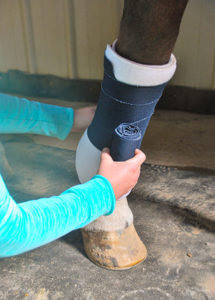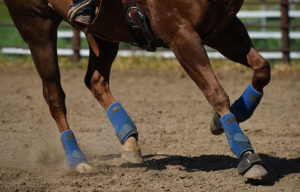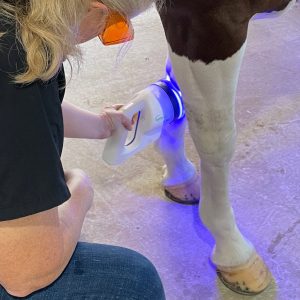Tendons: Keep Them Moving
Like keeping the pistons of an engine lubricated for smooth, easy movement, the tendon sheaths of a horse function similarly by providing a friction-free environment in which tendons can move. But if the lubricant becomes fouled, engine malfunction follows. It’s the same with a horse’s tendons. That can mean big-time problems: Neither the four-wheeled or four-legged vehicle will run without serious repair!

The tendon sheath is a fluid-filled sleeve that envelops and lubricates the tendon and provides an environment in which the tendon can smoothly move and change direction where there is joint movement. But if sheath-penetrating injury occurs, infection can follow. Even a simple wound can become septic, putting the horse at risk for permanent lameness and even death.
Septic Insights
Septic tenosynovitis, or a septic tendon sheath, describes an infection that produces inflammation in a tendon sheath. Usually caused by a puncture, laceration, or trauma, septic tenosynovitis most often occurs in the digital tendon sheath (behind the fetlock) and the tarsal sheath (behind the hock), as these are the structures most likely involved with punctures or lacerations. Additionally, infection can occur when an aseptic tenosynovitis (an uninfected tendon sheath wound) becomes infected following a therapeutic injection into the sheath, although this is very rare.
Nathaniel A. White II, DVM, MS, Dipl. ACVS, Director of the Marion duPont Scott Equine Medical Center, Virginia-Maryland Regional College of Veterinary Medicine, and Theodora Ayer Randolph Professor of Surgery, further explains septic tenosynovitis: “Bacteria or other contaminants can invade the sheath as a consequence of an injury. Once there, these contaminants inoculate the synovial fluid and lining, allowing bacterial growth and subsequent infection. Because the tendon sheath has synovial fluid within the sheath, the infection can fulminate (explode) and become trapped within the sheath. As there is always movement of the tendon within the sheath with weight bearing and walking, the wound or traumatized area is irritated
Create a free account with TheHorse.com to view this content.
TheHorse.com is home to thousands of free articles about horse health care. In order to access some of our exclusive free content, you must be signed into TheHorse.com.
Start your free account today!
Already have an account?
and continue reading.
Written by:
Marcia King
Related Articles
Stay on top of the most recent Horse Health news with












